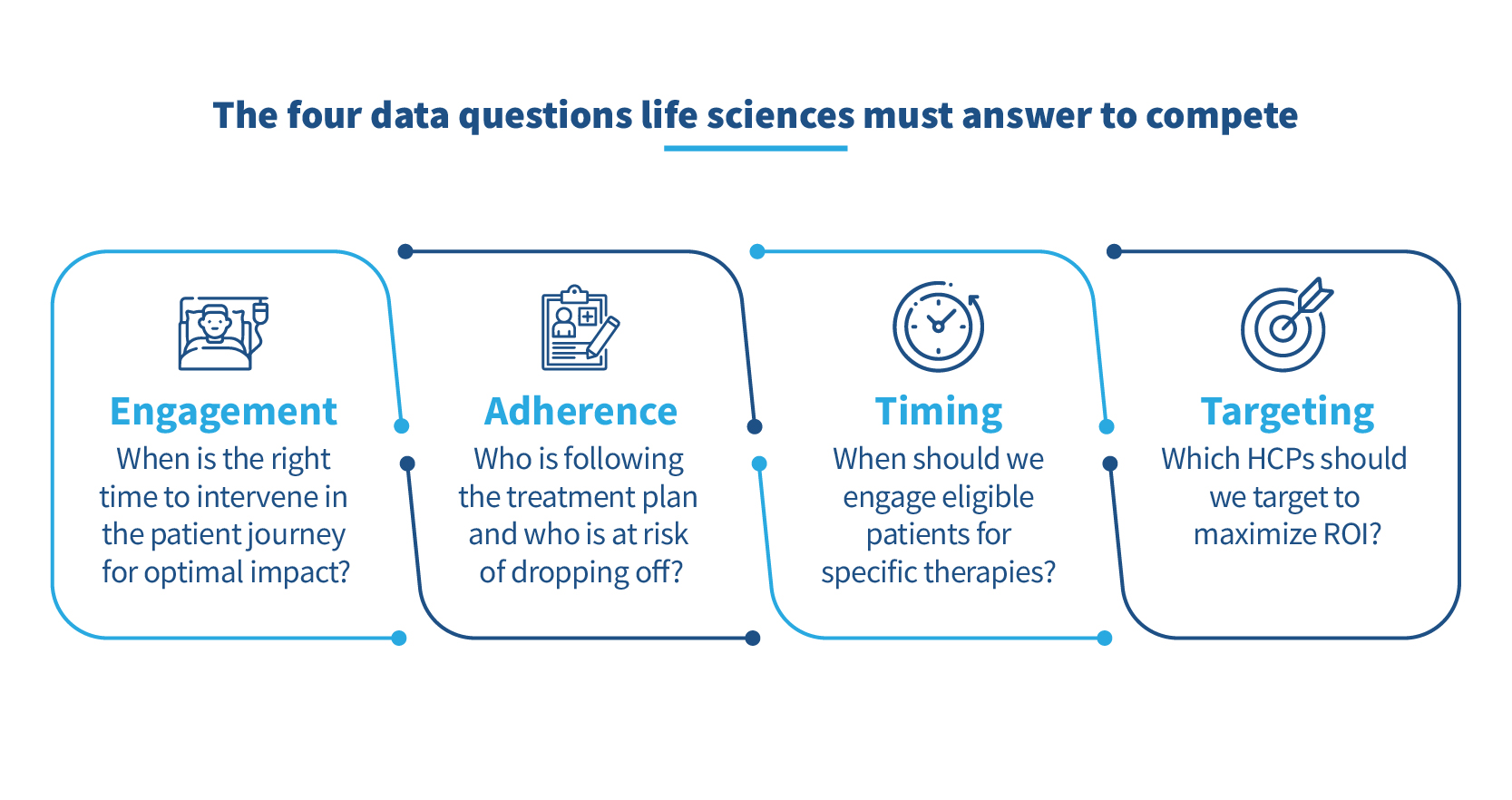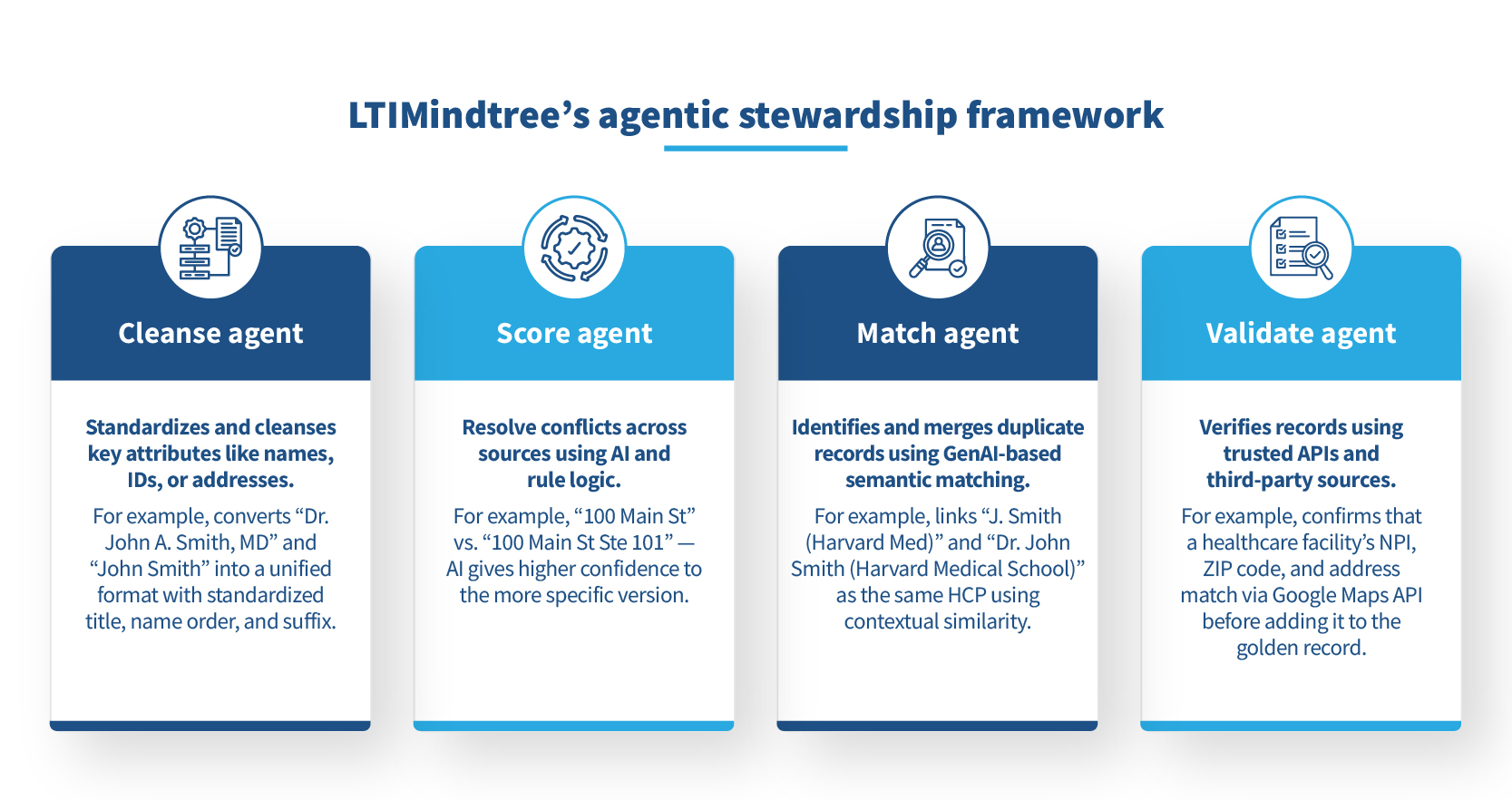Unlocking Customer-Centricity in Life Sciences with AI-Ready Master Data Management (MDM)
Personalization once defined retail. Now, it’s redefining healthcare.
As life sciences enterprises, including chief data officers (CDOs), IT leaders, commercial heads, and marketing strategists, embrace digital transformation, customer-centricity is evolving into precision engagement, where treatment plans, messaging, and support are tailored using genomic, clinical, and behavioural data.
In this environment, traditional master data management (MDM) systems fall short. To serve patients and healthcare professionals (HCPs) at a personalized level, enterprises need AI-ready data foundations that support intelligent insights, contextual outreach, and governance at scale.
This POV explores how modern MDM, combined with generative AI (GenAI), large language models (LLMs), and a new model for intelligent stewardship, enables life sciences firms to deliver next-gen customer experiences while staying compliant and agile.
Why modern MDM is mission-critical for life sciences marketing
As life sciences go digital, customer-centricity hinges on data. And that raises a new set of mission-critical questions.

Figure 1: The four data questions life sciences must answer to compete
Legacy MDM fails to answer these demands with accurate, integrated, real-time data.
Traditional systems are rigid, complex to scale, and painfully slow to evolve. Adding a new rule can take weeks. Integrating external sources? Even harder.
If your data foundation isn’t AI-ready, you’ll fall behind, not in months, but years.
Modernizing stewardship: From manual tasks to intelligent agents
Data stewardship is no longer sustainable with manual rules, endless exceptions, and fragmented workflows.
That’s why LTIMindtree developed Agentic Stewardship, a GenAI-powered framework where intelligent agents handle the tasks traditionally managed by human stewards. These agents bring real-time accuracy, context, and learning into every step of the MDM process. Our core agents include the following.

Figure 2: LTIMindtree’s agentic stewardship framework
LTIMindtree already uses these agents in real-world implementations, constantly improving them using contextual data and LLM capabilities.
Inside the engine: How LLMs + Vector databases drive intelligence
At the core of LTIM’s agentic approach is a GenAI-powered engine that leverages LLMs and vector databases to match and validate complex records at scale. Here’s how it works:
Text is transformed into embeddings
Source data (e.g., names, addresses, HCP records) is converted into string-based vectors.
Embeddings are stored in a vector DB
These vectors are organized for fast semantic search and AI comparison.
Clustering algorithms create data groups
Similar entries are grouped, identifying records that likely belong together.
Matching agents resolve with high precision.
Agents tap these clusters to find the most accurate data pairs, even across noisy or incomplete inputs.
LTIM’s proprietary LLM-powered accelerator enhances this process, delivering match-merge results faster and more accurately than traditional MDM platforms.
Automated business rule generation: Let GenAI Do the Heavy Lifting
Building and maintaining business rules is one of the biggest operational drains in legacy MDM, especially when rule logic depends on human input.
LTIM’s ML-powered Business Rule Generator eliminates this bottleneck by dynamically discovering patterns across key Data Quality (DQ) dimensions like:
- Completeness
- Accuracy
- Consistency
- Timeliness
- Uniqueness
- Integrity
Here’s how it works:
- Pre-process the data
Clean and standardize source fields to prepare for rule discovery. - Filter out sensitive data
Ensure compliance by stripping identifiers and applying the masking logic. - Mine rules using AI
Apply association rule mining to detect logic-based, fuzzy, and threshold patterns, without writing rules manually. - Create a living rule repository
Rules evolve as data patterns change, enabling continuous intelligence in data governance.
Three must-haves for MDM modernization in life sciences
To fully realize the benefits of AI-powered MDM, organizations must modernize in three strategic areas:
- Strategic alignment
Create a modernization roadmap rooted in business outcomes, not just IT capabilities.
- Data privacy and compliance
Ensure secure handling of sensitive health and PII data across all systems.
- Enterprise-wide adoption
Drive cross-functional buy-in, from medical affairs to marketing to IT.
When data works smarter, you serve smarter
Customer obsession isn’t just a strategy; it’s an execution challenge.
And it starts with your data.
For life sciences leaders, delivering precision engagement requires more than clean records; it demands AI-ready MDM, agentic automation, and contextual intelligence that evolves with your users.
At LTIMindtree, we’re helping enterprises reimagine modern data stewardship, not with more dashboards but with intelligent systems that scale trust, transparency, and outcomes.
Because in a personalized world, your data should work just as personally for you.
Latest Blogs
Traditionally operations used to be about keeping the lights on. Today, it is about enabling…
Generative AI (Gen AI) is driving a monumental transformation in the automotive manufacturing…
Organizations are seeking ways to modernize data pipelines for better scalability, compliance,…
In the era of Industry 4.0, automation, robotics, and data-driven decision-making are dominating…




